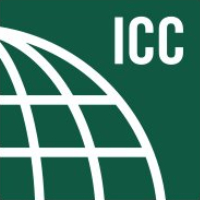
Guidance for the disinfection of building water systems using the IPC
Ensuring the safety of building water systems has always been a priority in the International Plumbing Code (IPC). At construction sites pipe and pipe fittings are exposed to a variety of pollutants and contaminants from manufacturing, to the handling and installation of the components that make up a water system. This is nothing new. Extensive flushing of a completed potable water system with potable water is usually not adequate to ensure that bacteria and microorganisms that might be present will be flushed away. This is the reason that disinfection of these systems is so important and is the only way to kill bacteria and micro-organisms living within potable water systems.
Let’s take a closer look at how the IPC addresses the disinfection of a building water system. Section 602.3.4 of the IPC requires that after construction, the individual water supply system shall be purged of deleterious matter and disinfected in accordance with Section 610. Section 610 takes it a step further and mandates the purging and disinfection of the system prior to utilization. The recommended method to be followed shall be that prescribed by the health authority or water purveyor having jurisdiction or, in the absence of a prescribed method there are procedures that are referenced in the American Water Works Association (AWWA) standard AWWA C651 or AWWA C652, or as described in further detail in section 610. The requirement also applies to “on-site” or “In-plant” fabrication of a system or to a modular portion of a system.
The most common disinfection method is the exposure of the internal surfaces of the piping system to a chlorine solution. Chlorine breaks down the cell walls of bacteria and microorganism and destroy the enzymes and structures inside the cell. This process is called “oxidation” and renders the remainder of the cells harmless. The true test of whether the piping system has been properly disinfected is for a bacteriological analysis to be performed. Sampling procedures and testing protocols are critical and specialized testing agencies are used to determine if any bacteria or microorganisms are still present in the potable water system.
The International Code Council and industry experts are also aware that stagnant or standing water can cause conditions that increase the risk for growth and the spread of Legionella and other biofilm-associated bacteria. Information that has been made available by the U.S. Centers for Disease Control and Prevention and other industry experts tell us that when water is stagnant, hot water temperatures can decrease to the Legionella growth range (77-108 degrees F, 25-42 degrees C). Stagnant water can also lead to low or undetectable levels of disinfectants, such as chlorine. There has been a lot of discussion on this topic during the past Code Council code development hearings and will probably be the center of discussion as we start the 2021/2022 code development cycle. Applications are being accepted until June 1, 2020. For further information click here for the 2021/2022 Code Development Schedule.
With the information provided above it may be in a building owner or building maintenance provider’s best interest to analyze the structure’s potable water distribution system and the water quality as part of this system. This is especially important if buildings have been shut down for a period of time or if reduced or low flow use of a building’s water distribution system may have occurred as this situation may have affected the potability of water that is intended to be delivered from the plumbing fixtures serving the said structure. Simply put this may involve flushing the building’s water distribution system and then having a bacteriological examination administered. If this bacteriological examination is positive than further disinfection of the building’s water distribution system or private water supply system (well) would need to be performed. Disinfection methods as prescribed by the health authority or water purveyor having jurisdiction should be followed. If no such authority having jurisdiction provides these procedures then the procedures found in the AWWA C651, AWWA C652 or the disinfection methods found in the 2021 IPC would be the recommended practice to be followed. The basic flushing and disinfection methods as prescribed in the 2021 IPC are provided for your use below.
- The pipe system shall be flushed with clean, potable water until dirty water does not appear at the points of outlet.
- The system or part thereof shall be filled with a water/ chlorine solution containing not less than 50 parts per million (50 mg/L) of chlorine, and the system or part thereof shall be valved off and allowed to stand for 24 hours; or the system or part thereof shall be filled with a water/chlorine solution containing not less than 200 parts per million (200 mg/L) of chlorine and allowed to stand for 3 hours.
- Following the required standing time, the system shall be flushed with clean potable water until the chlorine is purged from the system.
- The procedure shall be repeated where shown by a bacteriological examination that contamination remains present in the system.
The International Code Council is a nonprofit association that provides a wide range of building safety solutions, including product evaluation, accreditation, certification, codification and training. It develops model codes and standards used worldwide to construct safe, sustainable, affordable and resilient structures. The Code Councils 64,000 plus membership will continue to make a difference as Americans come together to help one another during this COVID-19 virus pandemic. Your country needs you and we welcome you to be a part of the process.







